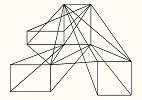


 |
 |  |
Incompetents in science assumed that nothing heats the atmosphere but greenhouse gases. They missed the fact (quotes) that most heat enters the atmosphere by wind blowing over the surface picking up heat through conduction and convection. That's getting too much wrong to be real science. They aren't getting the rest of it right when they get such simple elements of science wrong.
There is almost no radiation of the type carbon dioxide absorbs. What little is absorbed is re-emitted in femtoseconds. So carbon dioxide is nothing but a pass-through for miniscule amounts of radiation and there is no such thing as a greenhouse effect in the atmosphere. The air often cools 20°C or more during clear nights, as radiation is emitted into space. A transparent gas such as the atmosphere emits radiation vastly more rapidly than an opaque surface such as the Earth, because radiation can be emitted from every three dimensional point in a transparent gas but only from the surface of an opaque solid. Air cooling that fast is not trapping heat. What incompetent physicists missed is that the radiation which is absorbed is instantly converted into molecular heat, and heat is instantly radiated away. The absorbed wavelengths consist of three very narrow bands for carbon dioxide referred to as fingerprint radiation due to stretching and bending of internal bonds. The resulting heat causes the whole molecule to vibrate and emit radiation as broad-band infrared radiation.
Scanning across the wavelengths showed a dip for absorption peaks, which caused incompetent physicists to assume less radiation was being emitted. Those physicists focussed a lot of attention on the dips in the absorption spectrum as their convincing evidence of blocking or trapping. They didn't notice that the wavelengths shifted to a much broader range for emission. More than a century ago, saturation was evaluated finding that a small amount of carbon dioxide absorbs all radiation available to it, so more carbon dioxide cannot absorb more radiation. A physicists in Germany, Heinz Hug, did a study and found that all available radiation is absorbed by carbon dioxide by the time it travels ten meters under near-surface conditions. That means doubling the carbon dioxide would shorten the distance to five meters. Shortening the distance is not increasing the heat. Saturation occurs because there is almost no radiation available at the wavelengths carbon dioxide absorbs. The sun's radiation is too high of a frequency to be absorbed by carbon dioxide, which is why the gas is transparent. Only longer wavelength, infrared radiation is absorbed by carbon dioxide. That radiation is emitted by cold substances, which means most of that type of radiation comes from the surface of the Earth which averages 15°C or 59°F. Almost no radiation is emitted at that temperature for carbon dioxide in the atmosphere to absorb.
|
| ||||||||||||||||
 |
 | ||